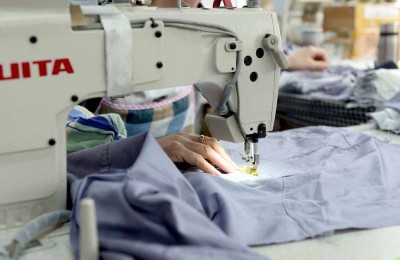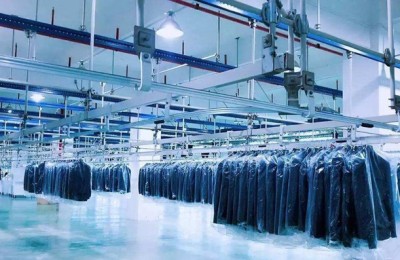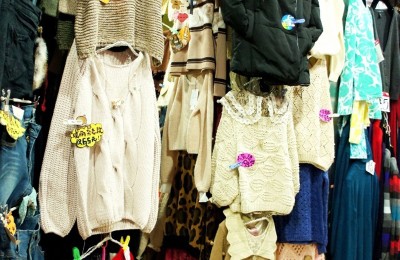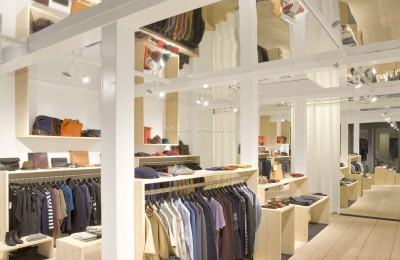Textile structure color printing technology
Textile structural color printing technology
The natural world is colorful and colorful. From the blue sky and rainbow to colorful flowers, plants, minerals and animals, the colors are rich and colorful.
Color is the reflection of visible light’s stimulation of our visual nerves. That is, visible light of a certain wavelength produces a certain color reflection, and color is just a human visual feeling.
There are many sources of producing or emitting visible light, and therefore there are many sources of color. Nassau roughly divides the causes of color into the following five types:
(1) Vibration and simple excitation of electrons: such as flame, lightning, aurora and color effects of iodine, some of which are high-temperature plasma emissions;
(2) Transition of electron coordination field effect: The metal complex color effects in ruby, emerald, turquoise and various metal complex dyes (or colors) all fall into this category;
(3) Transition of electrons between molecular orbitals: the color effects of most organic dyes (or pigments) and some inorganic substances (sapphires) fall into this category;
(4) Transition of electrons in the energy band: the color effects of non-ferrous metals (gold, silver, copper and iron), semiconductors and color centers (amethyst, smoky quartz) fall into this category;
(5) Geometric and physical optical effects: dispersive refraction, scattering, interference and diffraction color effects.
Within these five causes, they can be further subdivided into at least fifteen.
Three of them are physical effects, one is chemical effects, and the third is a combined effect with chemistry.
Physical effects include three ways of producing color: light reflection, refraction and interference. Chemical effects are mainly the interaction between pigments such as dyes and color materials and light. The color of some substances, such as gemstones, is the result of the combined effects of physics and chemistry. . For example, rubies are composed of Al2O3 crystals, but containing a small amount of Cr2O3·Al2O3 crystals are colorless, Cr2O3 is green, and a small amount of Cr2O3 present in the Al2O3 crystal lattice appears red. This is due to the perturbation (compression) of the distance between adjacent molecules. The Cr-O bond length is slightly shortened, causing a change in the excitation energy, absorbing different wavelengths, and changing the color from green to red. So it is the result of the combined action of physics and chemistry.
Textile color development (including dyeing and other coloring) belongs to the interaction of light and large solid materials. There are many ways to produce color in textiles. Currently, color is mainly produced by applying colored substances (adsorbed dyes or adhesive pigments), but in addition, there are other ways. Even if it is dyed with dyes or pigments, the color produced is also changed by other factors. This article mainly discusses the color produced by objects through geometry and physical optics and its impact on the color of textiles, especially the so-called structural coloration and its impact. When a beam of light interacts with textiles, at least several modes of action as shown in Figure 1 will occur.
Figure 1 How visible light interacts with fibers
As shown in Figure 1, the interaction between light and textiles also has physical and chemical effects, and these effects can produce or affect color. Physical effects include (1) reflection and diffusion; (2) scattering and transmission; (3) chemical effects such as refraction or deflection are the absorption of light.
1. Some structural color phenomena in nature
The objects are colorful. The production of color is based on the absorption of light and the dispersion, scattering, interference and diffraction of light by the pigments contained. The color produced by pigments is the result of selective absorption of light, that is, the color of complementary light after selective absorption; and the color caused by dispersion, scattering, interference and diffraction is the color produced by selective reflection, which is called structural color or tissue color. The colors produced by these two methods have significantly different properties. Everyone is already familiar with the color produced by selective absorption, because this is the color produced by dyeing and paint coloring. This article will not repeat it. Structural color is different from it in that it does not change the intensity. Structural color is different from it in that it does not change the light intensity. Structural color generally has the following situations: (1) The color is bright and changes strongly with the direction. The color only Seen in direct light, the color is mainly produced by the diffraction grating; (2) the color is bright and changes moderately with the direction, mainly the color produced by thin film interference; (3) the color is bright and does not change with the direction, Colors produced primarily by scattering and dispersion.
The production of colors by dispersion has been introduced in general physics. This was discovered by Newton when he used a prism to observe the spectrum. He explained that this was because the refractive index of light of different colors was different, so the light after passing through the prism can appear red, orange, The spectrum of colors such as yellow, green, blue, cyan, and violet. The distribution of this color spectrum is determined by the refractive index of the prism and the size of the prism apex angle. Different materials have different dispersion values, and the degree of dispersion separation is also different for different apex angle sizes. But it has nothing to do with the material’s absorption of light, so it is a typical example of structural color generation. Light is dispersed through a prism. The shorter the wavelength of the light, the larger the dispersion deviation angle. After dispersion, a continuous rainbow of colors can appear.
There are many substances that cause dispersion. The most common ones are small water droplets in the air. They are easily seen after rain or next to a fountain. At this time, the sun’s rays are dispersed through small spherical water droplets in the form of an internal reflection. In fact, secondary rainbows can also be seen when light undergoes secondary internal reflection in small water droplets.
Gemstone, these moonstones are also called gemstones. Unlike diamonds, they are made of a mixture of multiple components, and their sparkle is due to the scattering of small particles in them. A good artificial imitation is an aluminum-rich spinel crystal whose main chemical composition is MgAl10O16, in which the glitter is the AL2O3 particle. In addition, vitreous particles formed using different components, such as fluoride and phosphate, also have good flash properties.
Whether it is natural or artificial Al2O3. The color of gemstones is due to colored impurities, and their sparkling properties are due to the presence of tiny TiO2 needles. These needles are arranged in many groups at a certain angle, and they intersect with the light emitted from a certain direction. Reflect and cause the color in the gem to sway. The coloring medium of star ruby is chromium oxide, and the coloring medium of star sapphire is FeTi compound.
Glitter printing or coating finishing is to select small particles with particularly strong flash similar to natural diamonds or gemstones, and apply them to textiles through the pigment printing or coating finishing process to obtain glitter printing or coated textiles. These glittering materials not only have good reflective capabilities, but can also produce iridescent colors through dispersion, which change with the viewing angle.
Cheap glitter is aluminum powder, but it is not very reflective and does not have dispersion. Some artificial micro-powder reflective materials (they are actually thin reflective materials) include aluminum-plated films or colored polyester. Ester film, these glitter flakes are also called colored onion flakes. Can be cut into strips, squares, hexagons, stars, etc. Their flash performance is closely related to the film-forming performance of the adhesive. If the aforementioned interference color silk powder (length is only 75u) is used as glitter printing or coating powder, it will not only have glitter, but also show structural color, bright and long-lasting color. This product has been used in products such as car clothing.
(3) Pearlescent printing and finishing
Pearls have been regarded as valuable items since ancient times. They have a beautiful “pearl luster”, which is not only good in reflection, but also has glitter and iridescent colors, and the luster is also softer.
Although pearlescent powder can be obtained by grinding pearls, it is found that this kind of pearlite can be obtained from other objects, such as fish scales. Its main component is 2-amino-6-hydroxyurea ring, also known as guanine, and its structure is as follows:
Its crystal is a rectangular crystal with a size of about 0.1×0.02×0.00lmm3 and a large surface area. It is a sheet-like object that has a strong ability to reflect light and produces strong interference with light, giving it interference iridescent colors. It is colorless by itself, so it can be mixed with colored paint. It will not affect the color of the paint, but it will show strong interference colors.
In addition to the use of natural pearl powder, there are also synthetic pearl powders, including basic lead carbonate, bismuth oxychloride, lead phosphate and other inorganic compounds. Their fine powders can also produce a luster similar to pearl powder, but the effect is slightly worse. .
The pearlescent printing or coating finishing process is similar to the conventional one. However, attention should be paid to the compatibility of the optical properties and processing properties of the adhesive or coating agent with the pearl powder.
Structural color printing should be a special type of printing. Due to its unique printing effect and good ecological properties, it will develop rapidly in the future, especially for some functional printing products with special functions.
Structural coloration widely exists in nature, but its use in textile dyeing and finishing has just begun. People still have insufficient understanding of structural coloration in nature. For example, the color of the butterfly wings mentioned above is the synergy of pigment coloration and structural coloration. The color-producing results are very beautiful, durable and non-toxic, belonging to the ecological color-producing method. In fact, the pigment in butterfly wings is a precious natural pigment called pteridin, most of which are xanthopterin derivatives. Its structure is as follows:
The xanthopterin dye riboflavin is also called vitamin B2. Its structure is as shown above. It also shows yellow-green fluorescence. It is a growth factor for humans and animals. Xanthopterin or vitamin B2 and a certain tissue structure can make the pigment color. It has a synergistic color-producing effect with the color of the knot. Many substances with pharmacological or other functions can also have this effect under certain conditions, which provides us with an idea for functional color printing and dyeing, that is, pharmaceutical functional dyeing and finishing processing.
For example, the pigments in bird feathers and beetle shells mentioned earlier in this article are also a type of structural color and pigment color. Similarly, humans contain natural pigment melanin, whose structure is shown in the following formula. For dopa-melanin and dopamine-melanin.
These pigments are one of the physiological components of animals, and the principles and ways they form different colors are also very inspiring for textile coloring. Because these pigments have a variety of physiological functions. bLLMu2lFjD
Disclaimer:
Disclaimer: Some of the texts, pictures, audios, and videos of some articles published on this site are from the Internet and do not represent the views of this site. The copyrights belong to the original authors. If you find that the information reproduced on this website infringes upon your rights, please contact us and we will change or delete it as soon as possible.
AA





